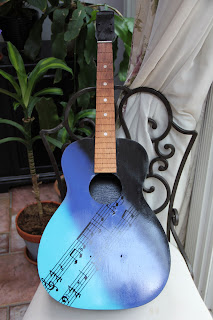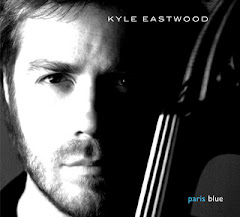It took me a damn long time to read this book, the first of
Ted Gioia’s many books about jazz and music that I have bothered to push
through myself. The author is a very demanding writer, too, with an extensive
vocabulary, exceptionally sharp insights, and an eye for linkages and
foreshadowing that few other authors and observers of jazz would be able to
duplicate (although I will keep trying). I sort of hated this book because it
is so dense. It has narrow margins top and bottom, left and right, and few
breaks and headings between long, compactly organized chapters, so that even
when you think to yourself, oh, just three more pages, you find yourself
reading for another fifteen minutes. Jazz doesn't strike most people as a
subject that deserves this scholarly thoroughness given by Mr. Gioia, but after
working through this book, I was amazed that I hadn't ran across such a book
before this.
 |
| This is a damn good book |
The book really has a three pronged approach. Of course, it
is a history book. As such it follows the chronology of its subject matter
faithfully, but what the author excels at is giving a taste of where the
present or past will lead, as well as why and how it will get there. Then, when
you reach the new material, the new artists, the new performers and the new
types of jazz, you have a very real understanding of what happened, what had to
happen, and who made it happen. I've often thought that a timeline showing the
various artists’ relationships to one another – who played with who, when, and
for how long – would be one of the most constructive tools to understanding
jazz (I even went so far as to begin constructing my own), and Mr. Gioia’s book
comes quite close to being a literal (if not visual) timeline very much along
those lines. But it doesn't stop there.
This book also is – almost even more than a history book – a
listening guide. Of course, and you can’t understand any history of music
without knowing the players, the songs, the albums, the performances, the
venues, not to mention the life and culture of the times, to gain a full
understanding of the music, but the author also throws in minutiae like the
producers and the hall owners, hangers on, and other jazz satellites. Mr. Gioia
excels in this regards and gives the reader plenty of guidance on the
recordings that will make the music, and its history, come to life. Thanks to
the Penguin Guide to Jazz Recordings, I have assembled a modicum of historic
jazz recordings, so I appreciated the author’s guidance on what to listen to,
given the historical context that he provides. He even provides a unique
“Discography” as an appendix, which more concisely outlines the most historic
recordings, and the book’s index provides enough insight and references to make
it also workable as a “highlight guide”.
Even after covering the music in depth, Mr. Gioia doesn't
forget the musicians. I can’t think of a single musician that he may have
excluded or a major story that may have been edited out. And unlike other
authors, he doesn't gloss over the seedier aspects of jazz and its culture. The
good the bad and the ugly are covered with enough philosophical awareness to
make the history real without overplaying the sordid aspects. After all, the
history of jazz is full of racism, drug use, and burn-brightly-and-burn-out-quickly
musicians, but those aren't
the things that define jazz to its practitioners
and fans. This book is about understanding the music and the musicians, not
just its history. Even as I was reaching the end of the book, no sooner would I
think of an artist or contributor whose name I hadn't read in the book yet,
than Mr. Gioia would eventually touch on them. Even on the second last page, I
was thinking “well, still no mention of African jazz” than Mr. Gioia covered
Abdullah Ibrahim and his work. Truly, this is as thorough a history of jazz,
right up to modern times, that any reader could want.
As with so many other things I've covered in Late to Jazz,
my only regret about this book is, my realization of it was a little late. It’s
no fun to play “catch up”, but it’s less fun than missing out altogether. So I
congratulate myself on reading this book, finally, almost as much as I
congratulate Mr. GIoia on writing it. This is a great educational book, and an
interesting, fun, insightful read.















































